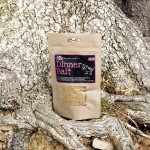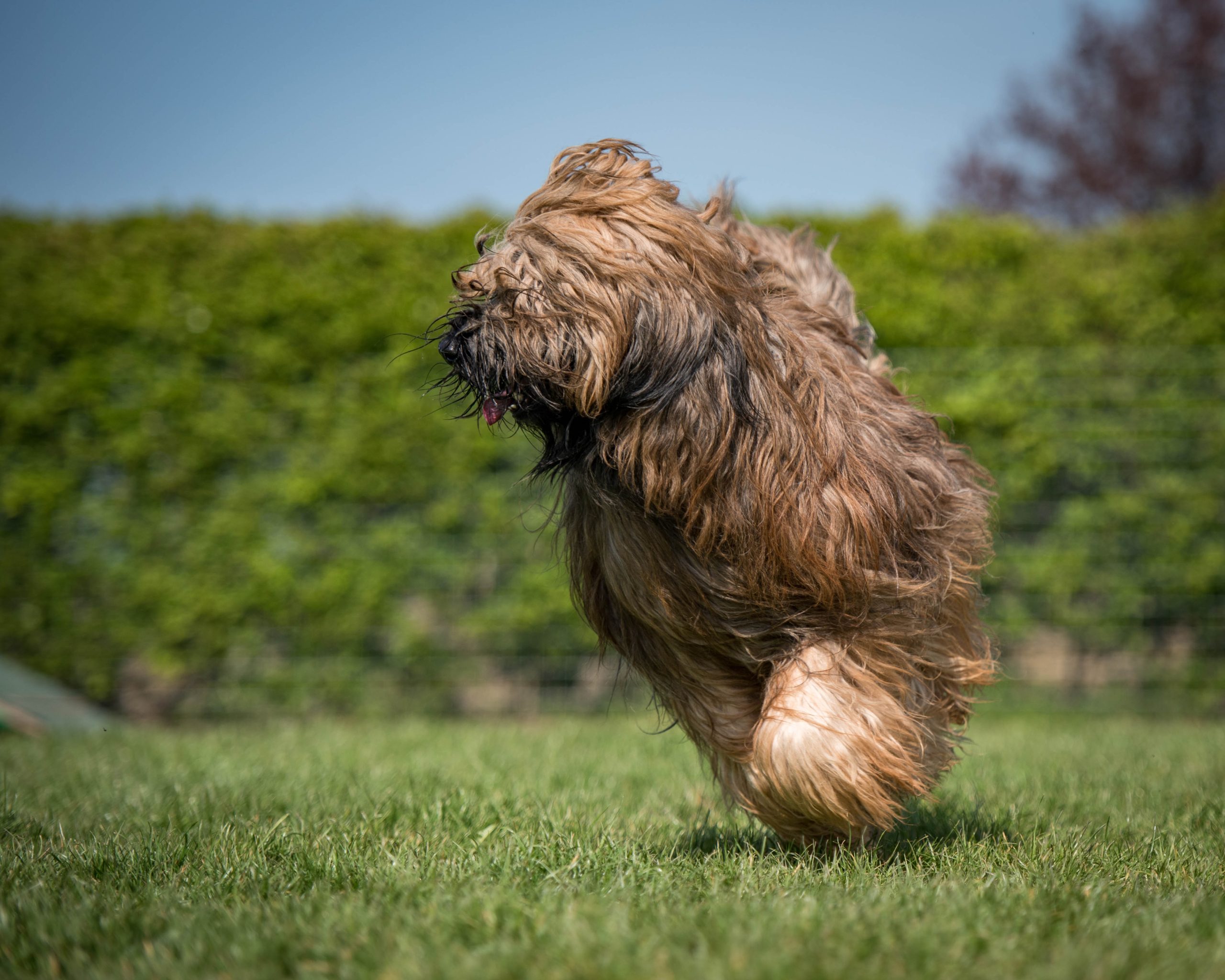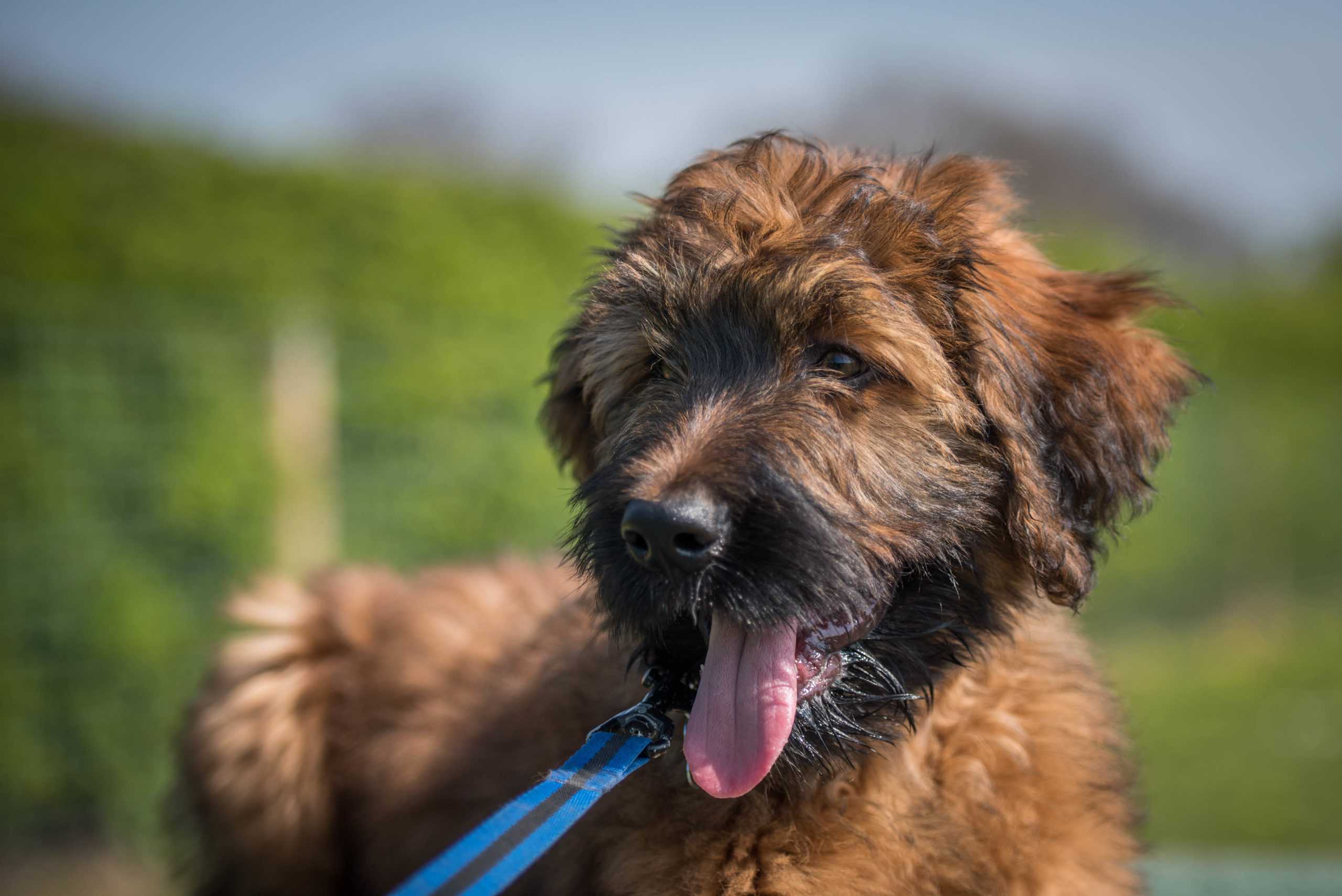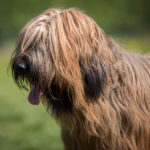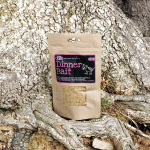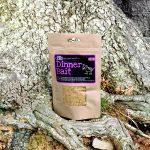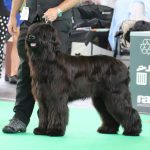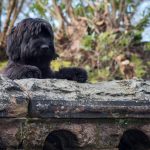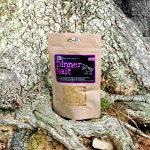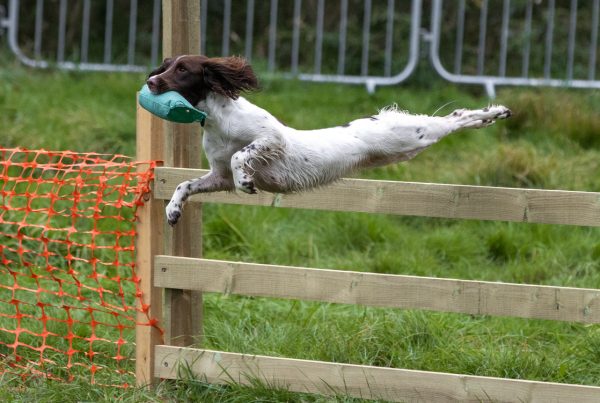
“I feel that the CP range is a very good quality priced food which suits my Briards and as we all know – we are what we eat. We now only feed CSJ on all the Briards. I feed my Briards on CP21, CP24, and the younger ones on CP30. ” Carol Foster
Briards are good looking, large dogs with their striking, long, flowing coats.
Originally bred as working dogs, for herding and guarding flocks of sheep in France, they are highly valued for their alert, kind and loyal natures, often called ‘a heart wrapped in fur’. Once they have bonded to their family members they are protective of them. They are intelligent dogs and learn quickly.
Dogs can be black, fawn with variations in shade or slate grey. Rugged, agile and supple they are able to turn very quickly making them ideal for herding. They have double dewclaws on their back legs as well as single ones on their front legs.
Carol and Fostebrie Briards
Carol Foster is based in South Yorkshire and believes in quality not quantity when breeding puppies. She focuses on breeding good natured and healthy, well-balanced Briards, ideal as family pets and suitable for showing or working.
Owning, showing and breeding Briards has been her passion for nearly 40 years. Carol’s dogs are treated as much-loved family members and she expects the same from any new puppy owners. They live in the house as part of the family and as Carol used to be a hairdresser, she spends hours grooming their flowing coats.
First and foremost to Carol is the health and well-being of the dogs and puppies she breeds. Her breeding dogs are carefully chosen for their health, temperament, character, structure and conformation.
Carol and her partner Phil have previously imported a dog from Europe and also brought in carefully chosen fresh bloodlines from USA, Australia and Belgium to broaden the Fostebrie gene pool.
For owners of her Briards, Carol offers ongoing support and advice whenever it is needed for the duration of the dog’s life.
It all started with Storm & Sergio, only 10 months apart in age, They came from totally different lines and were the best of friends. They grew up, played, went to shows together and passed away within 2 weeks of each other after long and happy lives. Their memory lives on in the Fostebrie pups they both sired.
Some Fostebrie Successes
Logan. Fostebrie Supremo Noir JW Sh Cm
1) Top Breeders 2018 in UK, Australia and Ireland.
Carol believes that this success is due to hard work and consistent breeding.
2) Successes at 2019 Championship Shows:
Ch Fostebrie Precious Hope (ai) JW, ShCM, WW18, BW18
Bitch Challenge Certificate (CC) at;
- Blackpool
- Windsor
- Welsh KC
Bitch CC + Best of Breed (BOB) Richmond
Bitch CC + BOB + Pastoral Group 4 WPBS
Sel NL, IR Ch, Ch Fostebrie Magic Star
- Dog CC + BOB at Manchester
- Reserve Dog CC Blackpool
- IR Ch, Fostebrie Fantasy
- Bitch CC + Res. Best in Show at British Briard Club
- Reserve Bitch CC at Birmingham
- Fostebrie Romantique of Kellbry
- Bitch CC + BOB + Pastoral Group 1 (Handled by 13 yr old Ilysia)
- Fostebrie Exotique Noir of Kellbry JW, ShCM
- Reserve Bitch CC at Blackpool
- Fostebrie Pure Creation
- Reserve Bitch CC at Welsh KC
- Fostebrie Supremo Noir JW, Sh CM
- Reserve Dog CC at WPBS
- Reserve Dog CC British Briard Club
Ch Fostebrie Dream JW
- Best Veteran at Windsor
Fostebrie Renaisance at Lavendale
- Best Veteran at Welsh KC
3) Junior Warrant Competition:
In 2019, Four Fostebrie Briards gained their Junior Warrants, (3 of them from the same litter). Three of these dogs qualified to go to London to take part in the semi-finals at Discover Dogs in October 2019. Out of 64 dogs 10 were chosen to go through to the final at Crufts in 2020. One of the 10 finalists was Ch Fostebrie Precious Hope(ai) JW Sh Cm WW18 Benx18
4) World Dog Show (Amsterdam 2018):
Six Fostebrie Dogs travelled to the World Dog Show held over three days. All six dogs were graded excellent on each day and placed in their respective classes.
Highlights of the World Dog Show were:
13 yr old Ilysia competed in the Junior Handling semi-finals with Fostebrie Romantique (Macey).
Ch & Ir Ch Fostebrie Magic Star (Oska): 1st in Championship Class and Reserve Best Dog at the Speciality Show.
Ir Ch Fostebrie Spartan (Troy): 1st in Championship Class and Reserve Best Dog at the Benelux Show.
Ch Fostebrie Precious Hope (ai) JW Sh Cm (Hope): Benelux Winner & World Winner
History of the Breed
Briards are one of the oldest French breeds that could date as far back as Emperor Charlemagne’s rule in 768 AD, when similar looking dogs appear in tapestries.
The breed is thought to be a descendant of Sir Aubry de Montdidier’s dog who took it upon himself to relentlessly pursue his master’s assassin. The King ordered that a duel should take place between the man and the dog in 1371 on the Isle de Notre Dame, and the dog won. The dog might well have been known as the dog of Aubry (chien d’Aubry), and it could easily have become over time, to ‘chien de Brie’.
There is another story that the dogs came from the region of France known as Brie where they were developed for their wonderful guarding and herding skills.
Napoleon is believed to have had two Briards.
American President Thomas Jefferson was so impressed with the breed he took several back to the States where they worked with American farmers and became highly regarded.
The breed became popular after the Paris dog show of 1863, after being crossed with the Beauceron and the Barbet.
Briards in the War
The Briard was made the French army’s official dog. Due to their keen hearing and high intelligence they were used during World War I as red cross dogs, sentry dogs and ammunition carriers. On the battlefield, Briards appeared to know which wounded soldiers needed help and which were beyond help. Sadly, as a result of the war, breed numbers were depleted almost to extinction at the end of the war.
Briards in the UK
The breed arrived in Britain in the late 1960’s. The first Briard to be exhibited in the UK was in 1967 with 2 dogs then qualifying for Crufts in 1969. The British Briard Club was established in 1973 and a year later the Kennel Club granted the breed full championship status.
As well as showing Briards compete in dog agility trials, obedience, flyball and herding events. Briards are now used in service and therapy roles to help people with disabilities and comfort people in hospitals, schools, and retirement communities. They are excellent as autism and PTSD service dogs for adults and children. With keen intelligence and loyalty they can really help improve someone’s quality of life.
Briard Characteristics
Positives
Loyal and devoted family pets and companions
- Low shedding coats
- Real ‘extroverts’ and very playful by nature
- Good watchdogs because they are always on the alert
- Good around children
- Intelligent and in the right hands, easy to train
Negatives
- Mind of their own
- Require regular grooming
- Better suited to households with large, secure back gardens
- Large dogs that don’t realise their own strength and size
- Often not the best choice for first time dog owners
- Low boredom threshold
- Need to be very well socialised from a young age
- Because they are a herding dog they like to chase
Latest news from Carol Foster at Fostebrie
“We have been away with the dogs showing with great results in Scotland. We have just booked to go off again before Christmas to the Netherland and taking Hope, she only needs one more win to become Dutch Champion…”
